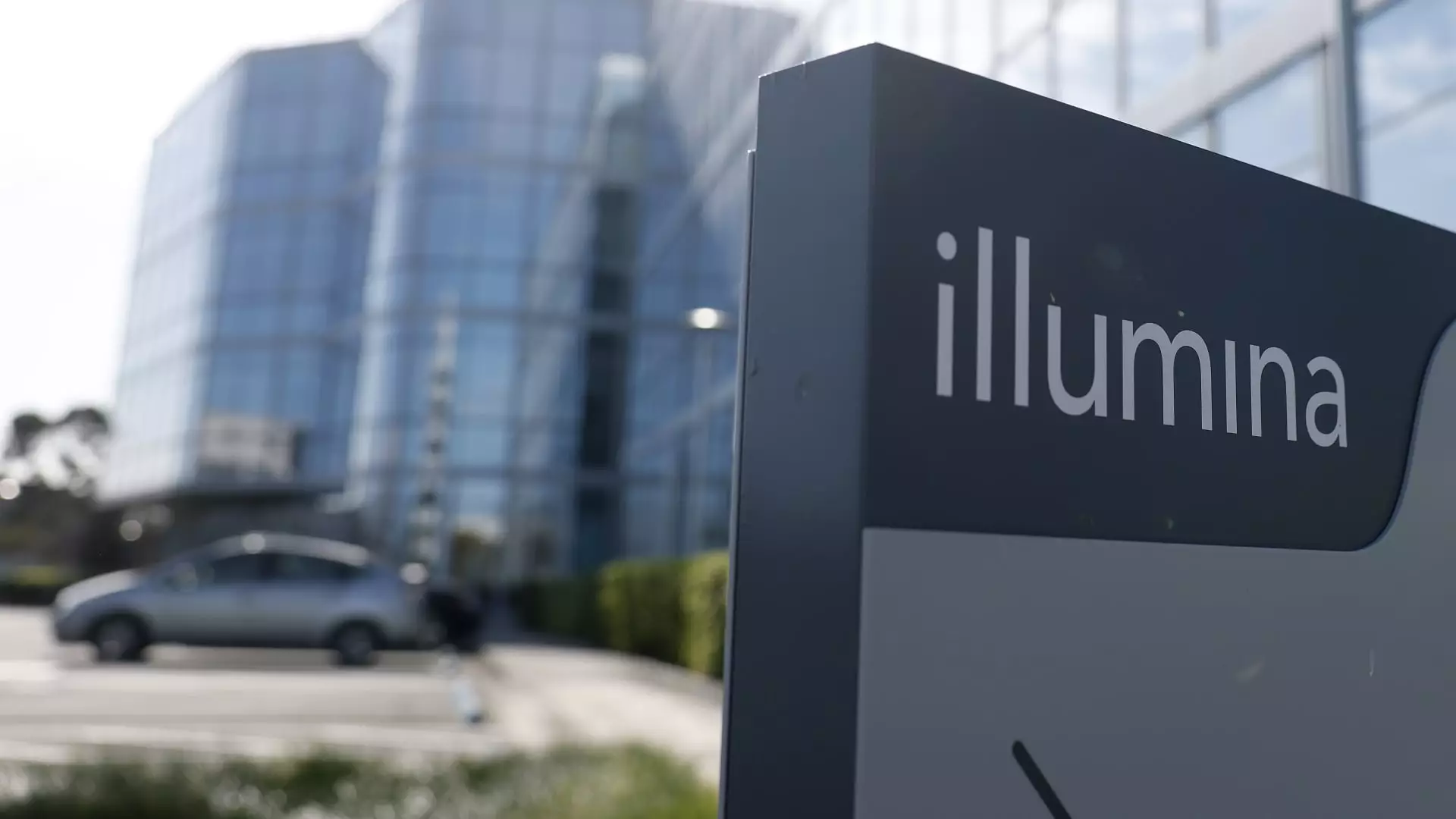Illumina, once heralded as an undisputed front-runner in genome sequencing, is now grappling with a climate of uncertainty threatening its hard-earned status. With a steep fall from a stock price of $511 in August 2021 to a mere $80 today, the once robust company has experienced an alarming decline in market valuation, plunging from approximately $70 billion to just $12.67 billion. At a time when genomic solutions are becoming ever more vital, Illumina’s recent missteps raise concerns about its long-term viability. In a challenging political and economic landscape, the stakes could not be higher.
The factors behind this downturn are manifold, ranging from post-pandemic demand fluctuations for sequencing machines to ambitious yet flawed corporate strategies. It’s clear that Illumina harbored an aggressive growth mindset, but has that unyielding ambition ultimately led to its downslide? The emphasis on corporate acquisitions, notably the costly re-acquisition of its spinoff company Grail, has drawn critical scrutiny. While expanding its genomic toolkit could have reinforced its market domination, the fallout from regulatory barriers following the acquisition suggests a misjudgment that even investment titans like Carl Icahn and his protégé Keith Meister could not foresee.
The Grail Debacle: A Case Study in Overreach
Illumina’s adventures with Grail serve as a cautionary tale in corporate risk management. Initiated in 2015 and subsequently spun out in 2016, Grail could have represented a vital asset for Illumina’s portfolio had it not been for the strategic blunders surrounding its reacquisition in 2020. While the allure of owning a cancer detection testing company was compelling, Illumina’s decision to proceed without essential regulatory approvals exemplifies the pitfalls of unchecked ambition.
Despite the initial promise, the European Commission’s deference to regulatory standards quickly darkened the narrative, leading to a significant fine that compounded Illumina’s challenges. Illumina’s gambit not only left shareholders in limbo; it also revealed a company struggling to calibrate its aggressive growth strategies with the hard realities dictated by public health policies and international politics.
The eventual decision to spin Grail off again in June 2024 reveals the depth of miscalculation. One must question if Illumina was too focused on ambitious acquisitions to notice the shifts in the political and regulatory climates. In a period of great complexity, the desire for rapid expansion may have overshadowed prudent risk assessment.
Navigating a Complex Political Landscape
In today’s world, navigating a tangled web of geopolitics is as crucial as business acumen, especially in industries like biotechnology that have implications for public health. As geopolitical tensions rise, particularly in Eastern Europe and Asia, Illumina’s operations face significant challenges. What once seemed like a reasonable global expansion strategy now appears as a precarious balancing act with geopolitical uncertainties shaping market dynamics.
The focus should shift towards restoring credibility and securing stable revenue streams in a climate where biotech funding is increasingly uncertain. The future of the National Institutes of Health has left many companies, including Illumina, wrestling with ambiguity. In such a challenging environment, sustaining growth while managing operational risks demands a leadership team capable of foresight and adaptive strategies.
A Leadership Refresh: Promise or Pretense?
Amidst these setbacks, Illumina has made attempts at rejuvenation by refreshing its leadership team, hoping to bring new life to its strategic vision. With the appointment of Keith Meister to the board along with the introduction of new executive figures, there is a glimmer of hope that this once-great biotech firm can adjust its compass. Meister’s track record suggests he may offer valuable insights, especially given his existing relationships with biotech companies that depend on Illumina’s technology.
Yet, a stark reality confronts this new leadership: can they genuinely pivot in response to the shifting landscape, or will it be more of the same? As the industry embraces the next generation of sequencing technology — the NovaSeq X — optimism is warranted, but a cautionary tale of overpromotion remains ever-present. The legacy of previous missteps weighs heavily on the walls of Illumina’s corporate headquarters.
The Razor-and-Blade Model: A Double-Edged Sword
The razor-and-blade model that Illumina employs, wherein the machines generate lower margins compared to the consumables linked to them, may have been its lifeline once. However, this strategic framework now faces a critical test. Transitioning technology invariably comes with teething issues that could result in short-term revenue declines.
Investors, therefore, are left wrestling with their projections for Illumina. Will the massive push into updated sequencing capabilities pay off, or will the financial pressures remain a recurring narrative? The ticking clock of investor confidence is a fierce adversary, and time alone will reveal whether Illumina can navigate these turbulent waters successfully.

